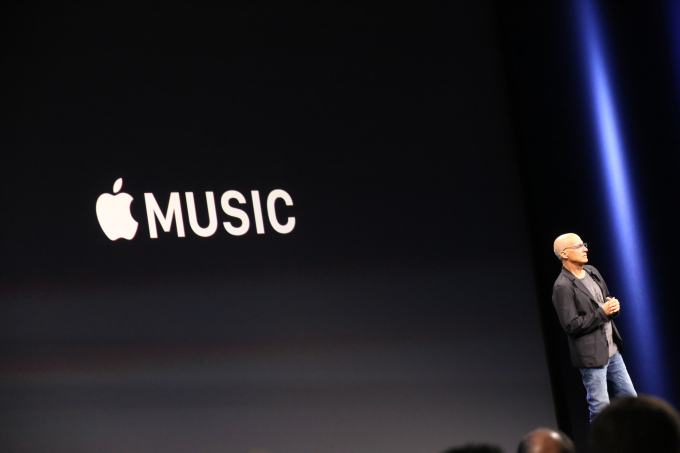Apple Music Hits The Right Note On International Availability And Pricing

It’s still early days for Apple Music, the newly launched streaming service, as the world chews over its user interface, initial service issues, that Beats 1 radio station and other unexpected factors. But two areas where the U.S. company has hit the right notes are international availability and pricing.
It’s always surprised me how slow the music streaming industry has been to move into emerging markets. Granted, users in Asia, Africa and Latin America don’t spend as much as those in Western markets, but their smartphones and tablets are their entertainment hubs, since many have limited access to TV, cable, and other offline entertainment. Everyone has music on their phone, but the potential to go beyond downloads and MP3s — legal or otherwise — and tap into a library of millions is hugely compelling.
And yet, Spotify’s global footprint is still limited, as is that of Rdio and Deezer.
With that in mind, it’s refreshing that Apple Music has gone global from day one. Beats 1 is available in 100 countries. That might sound obvious, but it is completely in contrast to Apple’s iTunes Radio service, which rolled out very slowly to North America, parts of Europe and Oceania but no further.
It isn’t just about global availability though, Apple has done right on price, too.
Apple Music costs from $10 for a single account in the U.S., but the company has priced its service competitively across the world. In Thailand — where I live– it is $5 per month, as is the case in Indonesia and elsewhere, but it is even lower in other parts of the world. The service costs around $3 in the Philippines and Russia, while in India it is available for just 120 INR (less than $2) per month. (Of course, it’s worth pointing out that catalogue availability will vary from country to country, which is another factor for prices.)
So not only is Apple Music available in a range of markets where rivals aren’t — Thailand, India, Indonesia, and Russia are three markets where Spotify is absent, for example — but it is offering seriously competitive prices, with the additional option of discounted family packages.
I’m pleasantly surprised by Apple’s approach here. Of course, it makes sense to at least match your competition on price, but let’s not forget that this is Apple — a company that charges top dollar for its smartphones… and consequently has minor (but loyal) userbases in many emerging markets in Asia and elsewhere in the world.
The only problem right now, is that you’ll need to shell out $600+ to get an Apple device on which to make use of that $2 subscription in India, for example. With Android phones offering increasingly sophisticated user experiences at a fraction of the cost of an iPhone — Xiaomi’s new Mi4i retails for just $200 in India, compared to $880 for the lowest priced iPhone 6 model — the cost of hardware is the barrier for Apple Music outside of the West right now until the Android version arrives this fall. (That’s unless you want to use the service solely on a Windows desktop device, which rather defeats the point of paying for a cross-platform music service when there are others that cover Android.)
As for Spotify, Rdio and other streaming music contenders. Apple’s focus on iOS and the nascency of streaming mean the market is far from sewn up, especially in countries where Android dominates. Plus, there’s certainly an argument that Apple Music is good for the industry in general since it raises awareness of music streaming among new demographics and consumers.
One thing that’s for sure, however, is Apple Music’s global footprint from day one highlights the difference that the company’s influence and financial muscle (plus its know-how via the acquisition of Beats) makes when dealing with licensing and the music industry generally.
ADVERTISEMENT



 NEWSLETTERS
NEWSLETTERS
709
SHARES